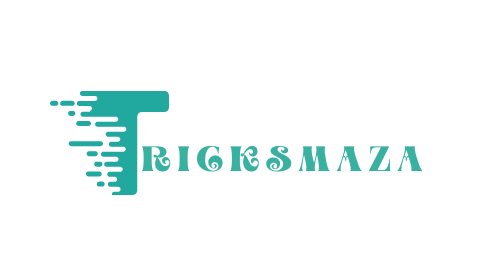Hijama therapy, also known as cupping. Itis an ancient healing practice that has been used for centuries in various cultures around the world. It involves applying suction cups to the skin to promote blood flow and improve overall health. While it may seem unconventional to some. Hijama has gained significant popularity in recent years due to its potential benefits and holistic approach to wellness.
Types of Hijama Therapy
There are several different types of hijama therapy, each with its own unique techniques and applications:
- Wet Hijama: This is the most common type of hijama. As it involves making small incisions on the skin before applying the suction cups. The suction draws blood to the surface, which is then removed. This technique is believed to help eliminate toxins and impurities from the body.
- Dry Hijama: In dry hijama, the suction cups are applied directly to the skin without making any incisions. This method is often used for general health and relaxation.
- Static Hijama: This technique involves placing the suction cups on the body. For a set period of time without moving them. It is believed to help improve blood circulation and reduce pain.
- Moving Hijama: In moving hijama, the suction cups are moved across the skin in a circular or linear pattern. This method is thought to stimulate the lymphatic system and promote detoxification.
Benefits of Hijama
Hijama is believed to offer a wide range of benefits for both physical and mental health. Some of the potential benefits include:
- Pain Relief: Hijama is often used to alleviate pain associated with various conditions, such as headaches, back pain, and arthritis.
- Improved Blood Circulation: By increasing blood flow to the affected area, hijama can help improve circulation and promote healing.
- Detoxification: Hijama is believed to help remove toxins and impurities from the body, which can improve overall health and well-being.
- Stress Reduction: The relaxation and calming effects of hijama can help reduce stress and anxiety.
- Boosted Immune System: Hijama may help strengthen the immune system. Making the body better equipped to fight off infections and diseases.
- Improved Fertility: Some studies suggest that hijama may be beneficial for improving fertility in both men and women.
- Skin Health: Hijama can help improve skin health by increasing blood flow and promoting cell regeneration.
Considerations and Precautions
While hijama therapy offers many potential benefits, it is important to be aware of the following considerations and precautions:
- Consult a Healthcare Professional: Before undergoing hijama. It is essential to consult with a qualified healthcare professional to determine. If it is suitable for you and to discuss any potential risks or side effects.
- Avoid Certain Areas: There are certain areas of the body where hijama should be avoided, such as the face, neck, and abdomen.
- Hygiene and Sterilization: Proper hygiene and sterilization techniques should be used to prevent infections and other complications.
- Potential Side Effects: While rare, hijama may cause some side effects, such as bruising, bleeding, or dizziness.
Hijama therapy is a fascinating and ancient healing practice that has gained popularity in recent years due to its potential benefits. While more research is needed to fully understand its effectiveness, many people have reported positive experiences and improvements in their overall health. If you are considering trying hijama, it is important to consult with a qualified healthcare professional and to choose a reputable practitioner.
Hijama and Modern Medicine: A Growing Dialogue
While hijama has been practiced for centuries, its integration into modern medical practices has been a subject of ongoing debate and research. Some healthcare professionals have expressed skepticism about its effectiveness, citing a lack of rigorous scientific evidence. However, others have recognized the potential benefits of hijama and have begun to incorporate it into their treatment plans.
Research and Scientific Validation
In recent years, there has been a growing interest in conducting scientific research on hijama. Studies have explored its effects on various conditions, including pain, inflammation, and blood circulation. While some studies have shown promising results. More rigorous research is needed to establish a definitive link between hijama and specific health outcomes.
Integration into Modern Medicine
Despite the ongoing research, some healthcare professionals have begun to incorporate hijama into their practices. Particularly in areas such as pain management and complementary and alternative medicine (CAM). In some cases, hijama is used as a complementary therapy alongside conventional medical treatments.
Challenges and Future Directions
Despite the growing interest in hijama, several challenges remain. One of the main challenges is the lack of standardization in the practice. Different practitioners may use varying techniques, making it difficult to compare results and establish evidence-based guidelines.
Another challenge is the potential for adverse effects. While hijama is generally considered safe, there is a risk of complications such as bruising, bleeding, and infections. It is important for practitioners to adhere to proper hygiene and sterilization practices to minimize these risks.
Looking ahead, there is a need for continued research. In ordrer to better understand the mechanisms of action and potential benefits of hijama therapy. Additionally, efforts should be made to standardize the practice and develop evidence-based guidelines for its use. By addressing these challenges. Hijama therapy may play a more significant role in modern healthcare as a complementary or alternative therapy.
Conclusion
Hijama therpay is a fascinating and ancient healing practice that has gained popularity in recent years. While more research is needed to fully understand its effectiveness, there is growing evidence to suggest that it may offer benefits for a variety of health conditions. As healthcare professionals continue to explore the potential of hijama, it is likely that its role in modern medicine will continue to evolve.



More Stories
Dental Implant Pricing: Expert Guide & Insights
Your Path to Parenthood: Affordable & Transparent Surrogacy
Multivitamins for Women’s Stress Relief